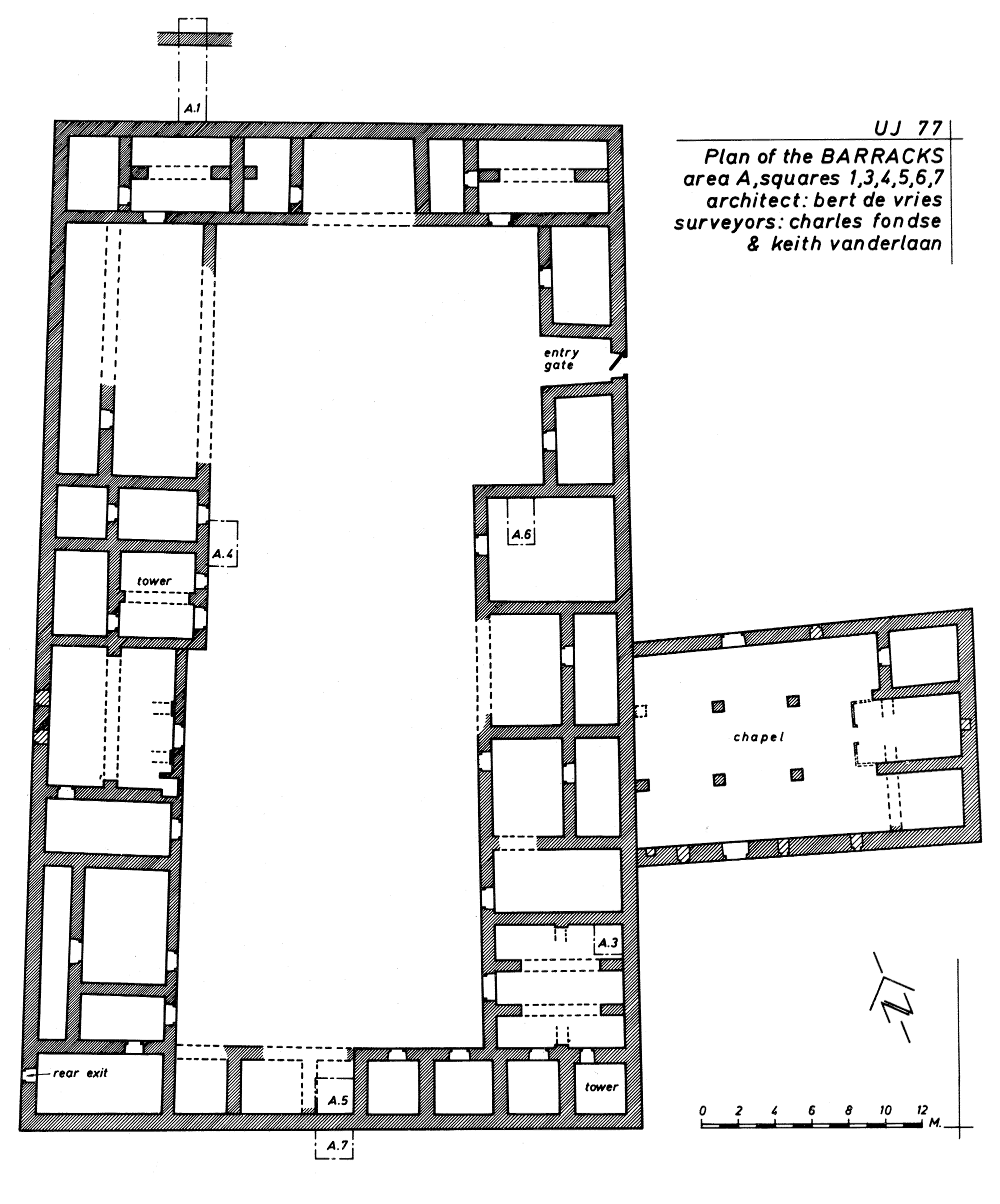The church was a small basilica with three naves (12.60 x 18.30 m) (fig. 141). It was accessed from the north and from the south by two doors which opened on the side aisles; no door opened onto the barracks to which the church was attached.
The naves were divided by two rows of pillars on which fell from the arcades. square windows are still visible in the clerestory wall (fig. 142). The building ended in a rectangular sanctuary provided with an axial niche and inscribed between two rooms side. The northern one opened onto the nave through a door. The restitutions differ for that of the south: Butler restored a room opening onto the collateral by an arch, which was then conserves, and on the sanctuary by a second arcade; the team of de Vries restores with more plausibility a partition between the room and the sanctuary. The corbels that supported the stone beams of the roof of the church were still visible when Butler passed by.
According to the plan published by de Vries’s team, the base for the chancel screen was identified in front of the sanctuary.
Anne Michel, Les Eglises d’Epoque Byzantine et Umayyade de La Jordanie V-VIII Siecle (Turnhout: Brepols, 2001), 179–81.
The unusual part of the church is at the east end, where there is a chamber of the ordinary kind on the north of the rectangular sanctuary, but no chamber on the south side, the space for the prothesis being divided from the sanctuary and from the end of the aisle by arches. The arch of the sanctuary and these two arches of the prothesis are still standing, all three being carried by a single pier. The remains show conclusively that the whole church was covered by a flat roof at one level, the side aisles certainly with slabs of stone, and the middle aisle in the same manner, in all probability. The roofs of the sanctuary and side spaces were also of stone and on the same level.
Howard Crosby Butler and Enno Littmann, Syria: Publications of the Princeton University Archaeological Expeditions to Syria in 1904-1905 and 1909., vol. 2:A (Leyden: E.J. Brill, 1919), 191.
